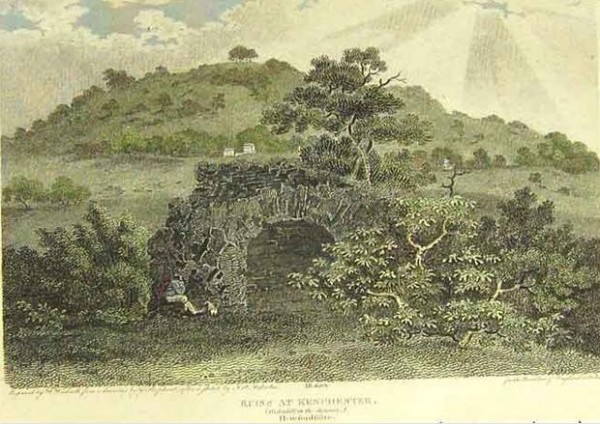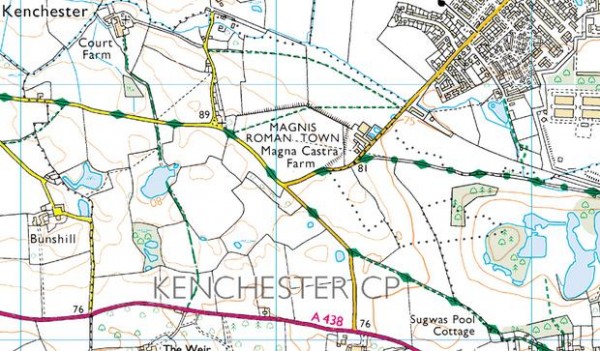1538-1553, Leland described how the ruins of Roman Kenchester were connected to fairy-lore. Roman coins were called Dwarves’ money and a a series of ruins were called the fairy king’s chair (Smith 1906,103).
[Kenchester] is far more auncyent then Hereford, and was celebrated yn the Romaynes tyme, as appereth by many thinges, and especyally by antique mony of the Caesars, very often fownd withyn the towne, and yn plowghyng abowt; the which the people ther cawlleth Duarfes Mony…. Peaces of the walles and turrests yet appere, prope fundamenta, and more should have appered if the people of Herford towne and other therabowt had not yn tymes paste pulled downe muche and pyked owt of the best for their buildinges…. The place wher the town was ys al overgrown with brambles, hasylles, and lyke shrubbes. Neverthelesse here and there yet appere ruines of buyldinges, of the which the folisch people cawlle on the King of Feyres Chayre.In 1610 William Camden mentioned no fairies but the chair was still there and better described: this niche may be the object above but the image seems too big?
The town is an irregular hexagon, higher than the surrounding lands, but without fosse or ditch. Nothing remains of its splendour except near the east end, a piece of what was probably a temple, with a niche which was five feet high and three broad within, built of rough stone, Roman brick and indissoluble mortar and called the chair.
This chair is also mentioned by Roger Gale in 1819: again no fairies feature.
Excavations and time did the necessary damage and by the middle of the nineteenth century almost nothing was above ground. Today there is one solitary wall near the river.
The Paranormal Database has an unsubstantiated comment that dwarfs danced here and made their homes in the ruins.


